As organizations rollout new in-person or hybrid work schedules, uncertainty remains with the COVID-19 delta variant and how to best keep employees safe and healthy while they’re in the office.
Focusing on employee health and well-being is not a new initiative for most companies. Organizations are increasingly valuing the holistic needs of their workforce and noting the link to productivity, engagement and satisfaction—all markers of a successful company and key drivers for talent retention.
But during this evolving global health situation, the stakes are higher. Research from the Centers for Disease Control and Prevention (CDC) found that in the height of the pandemic, 40% of adults were struggling with a mental health condition. Symptoms of anxiety and depression tripled from the year prior. Combined with sedentary habits adopted during quarantine, remote workers are more prone to musculoskeletal problems like back and neck pain.
Even as the vaccination rate increases, many are still concerned for their safety and the safety of their loved ones, especially younger family members not yet eligible.
It’s up to each company to identify strategies to help keep employees healthy as they return to the office. Not sure where to start? Here are quick and easy tips for you to implement as part of your return-to-work plans:
Step Up Your Cleaning Game
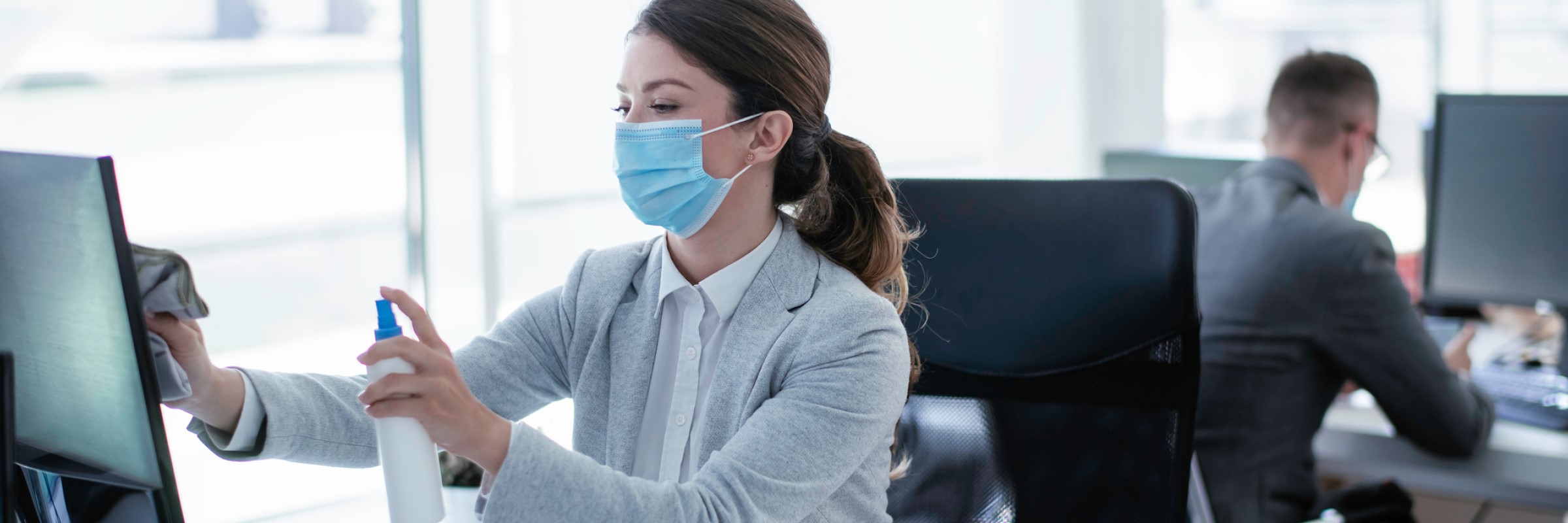 As more employees walk in and out of your front door, they’ll bring more germs along with them. Your organization likely stepped up its cleaning and sanitizing practices at the onset of the COVID-19 pandemic. Now it’s time to ramp up those activities again.
As more employees walk in and out of your front door, they’ll bring more germs along with them. Your organization likely stepped up its cleaning and sanitizing practices at the onset of the COVID-19 pandemic. Now it’s time to ramp up those activities again.
Make cleaning supplies readily available and post reminders for employees to wipe down their workspaces daily, especially when sharing work areas with hybrid team members. Designate rotating department captains for sanitizing conference rooms and other shared spaces. Don’t forget doorknobs, fridge handles and other commonly touched surfaces.
Rethink Your Space
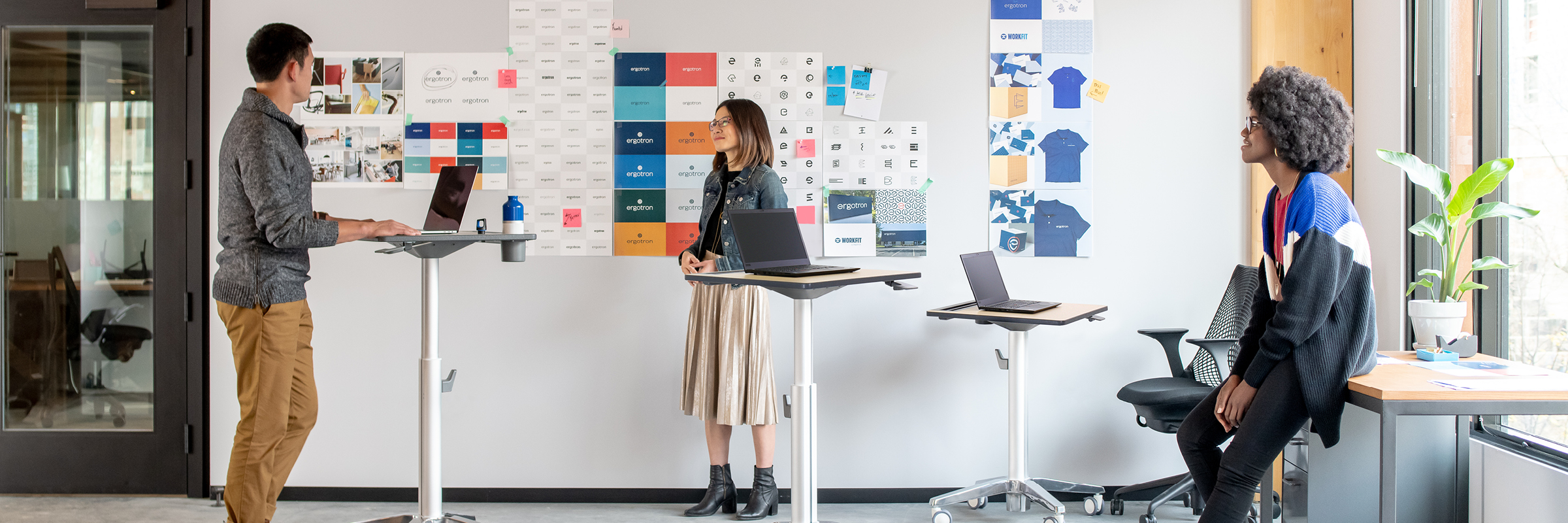 Take a note from top companies like Google and give your office space a refresh. That doesn’t have to mean enlisting an architect and design firm and knocking down walls. Determine how many employees will be in the office on an average day and survey the company to understand how they will use the office.
Take a note from top companies like Google and give your office space a refresh. That doesn’t have to mean enlisting an architect and design firm and knocking down walls. Determine how many employees will be in the office on an average day and survey the company to understand how they will use the office.
Build out quiet, individual work areas and larger collaboration spaces that each allow for plenty of physical distancing to help lessen the transmission risk. Consider investing in mobile desks to let each user choose the distance that matches his or her comfort level. Bonus: Mobile desks offer a flexible workspace option that can easily adapt to each team’s needs and each space.
Review the Sick Policy
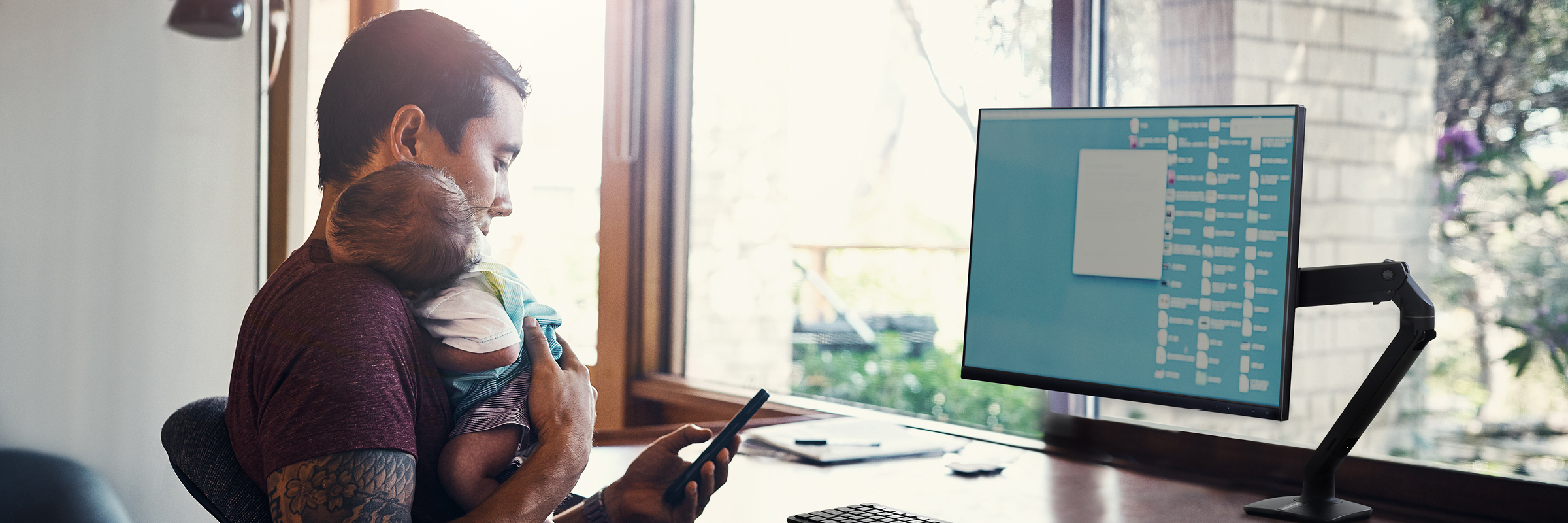 More than 90% of employees admit they go into work when they’re sick. That warrior corporate attitude became a non-issue when most employees worked remotely. Now as many return to the office, instill a company-wide understanding that if you’re sick, you should and will stay home.
More than 90% of employees admit they go into work when they’re sick. That warrior corporate attitude became a non-issue when most employees worked remotely. Now as many return to the office, instill a company-wide understanding that if you’re sick, you should and will stay home.
It’s one of the surest ways to help keep your teams healthy, and employees need to understand that an unexpected work-from-home or all-out sick day isn’t going to undermine their reputation. Ensure your sick policy supports and does not hinder your employees’ ability to put their health first.
For common colds or other infections, remind employees that the great work-from-home experiment of 2020 showed that remote work can also be productive and effective.
Build a Culture of Movement
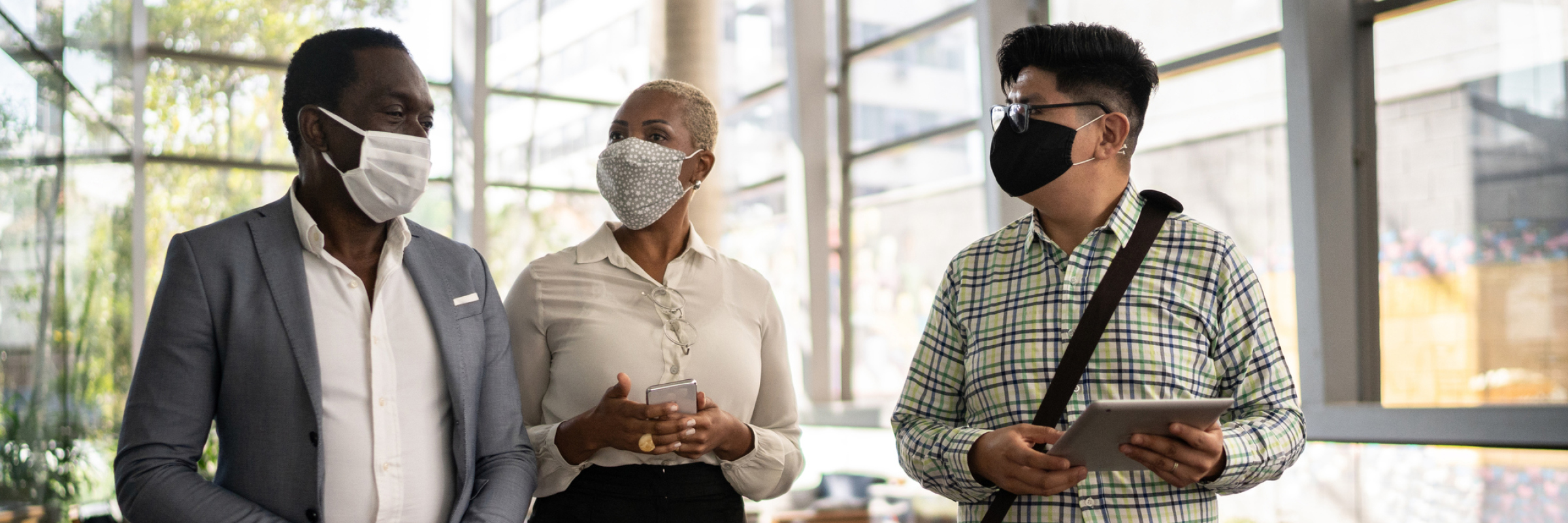 Many employees returning to the office took up unhealthy habits during quarantine. With social events cancelled and non-stop access to streaming services and salty snacks, many adopted sedentary habits after becoming accustomed to daily life in a small space. For remote workers, working on the couch or kitchen table often allowed neck and back pain to set in.
Many employees returning to the office took up unhealthy habits during quarantine. With social events cancelled and non-stop access to streaming services and salty snacks, many adopted sedentary habits after becoming accustomed to daily life in a small space. For remote workers, working on the couch or kitchen table often allowed neck and back pain to set in.
Reintroduce your employees to a healthy workstyle when they return to the office. Offer a variety of sit-stand workstations that allow workers to easily alternate between sitting and standing throughout the day. Encourage walking check-ins and normalize standing during longer meetings.
Research shows that low-level physical activity like standing throughout the workday provides a natural energy boost, supports greater focus and productivity, and helps prevent health complications like heart disease and diabetes.
Encourage Preventative Care
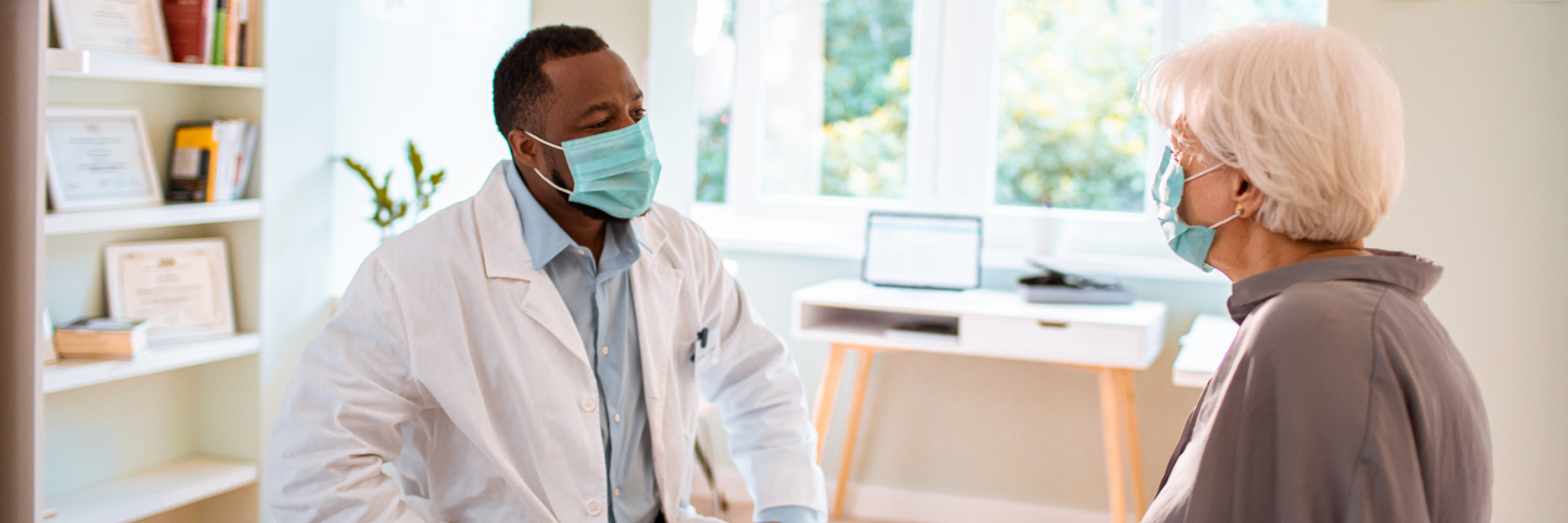 Routine doctor visits and screenings took a backseat to the once overwhelming number of COVID-19 cases. Now it’s time for employees to get back on track and resume their regular medical appointments. This includes an annual physical, cancer screenings and follow-ups for chronic disease.
Routine doctor visits and screenings took a backseat to the once overwhelming number of COVID-19 cases. Now it’s time for employees to get back on track and resume their regular medical appointments. This includes an annual physical, cancer screenings and follow-ups for chronic disease.
Have your CEO send an email or video message reminding your employee base to proactively manage their health with preventative visits. Staying up to date with screenings and seeing a doctor before the onset of symptoms is an important strategy to help keep employees healthy as they return to the office.
Ensure the message includes a reference to mental health. A healthy body and mind contribute to a happy and productive workforce. Encourage employees to seek mental health support for any new or pre-existing conditions. Stress negatively impacts the immune system so consider sharing tips to minimize stress and maintain balance.
Bring Back Ergonomics
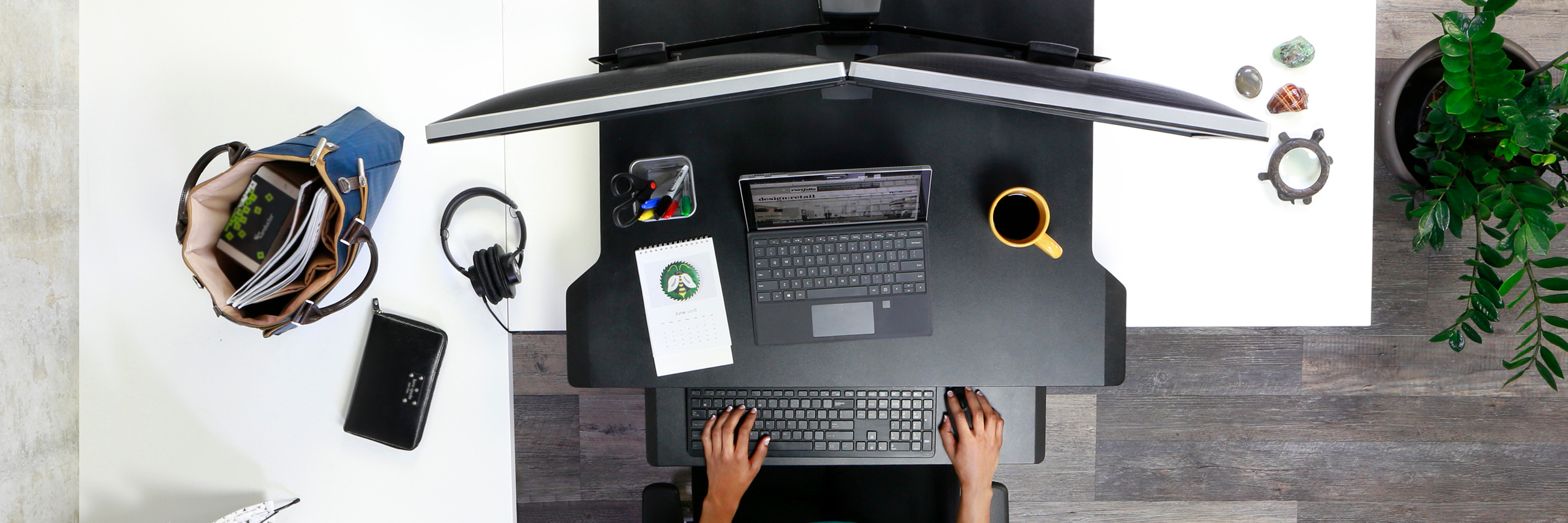 Temporary home workspaces often lack the proper ergonomic equipment or positioning. In the short-term, this can cause minor discomfort. For the long-haul, a less-than-ideal set-up or posture can lead to larger health concerns. An incorrect set-up or low-quality equipment can also be a safety hazard.
Temporary home workspaces often lack the proper ergonomic equipment or positioning. In the short-term, this can cause minor discomfort. For the long-haul, a less-than-ideal set-up or posture can lead to larger health concerns. An incorrect set-up or low-quality equipment can also be a safety hazard.
Back at the office, have each employee assess their space in terms of ergonomics. This tool will help them evaluate their monitor positioning, desk height and more. Then have them use this tool to identify the unique sitting and standing positioning that will support a comfortable workday. For a guide on how to identify and purchase high-quality, ergonomic equipment, click here.
Studies show that an ergonomic fit helps reduce neck and back pain while improving focus and employee satisfaction. Managing these common ailments can help mitigate the collective billions of dollars of healthcare, lost income and productivity costs.
Boost Employee Wellness
As you assess your own plan for keeping employees healthy as they return to the office, know that these same ideas can help you conquer future cold and flu seasons or other health events.
Employee health and safety will remain important in the years to come. Set the foundation for a healthy workforce to ensure your team is ready to work at their best to reach your organization’s goals.
Be sure to always follow the latest CDC guidelines for workplaces and businesses.



